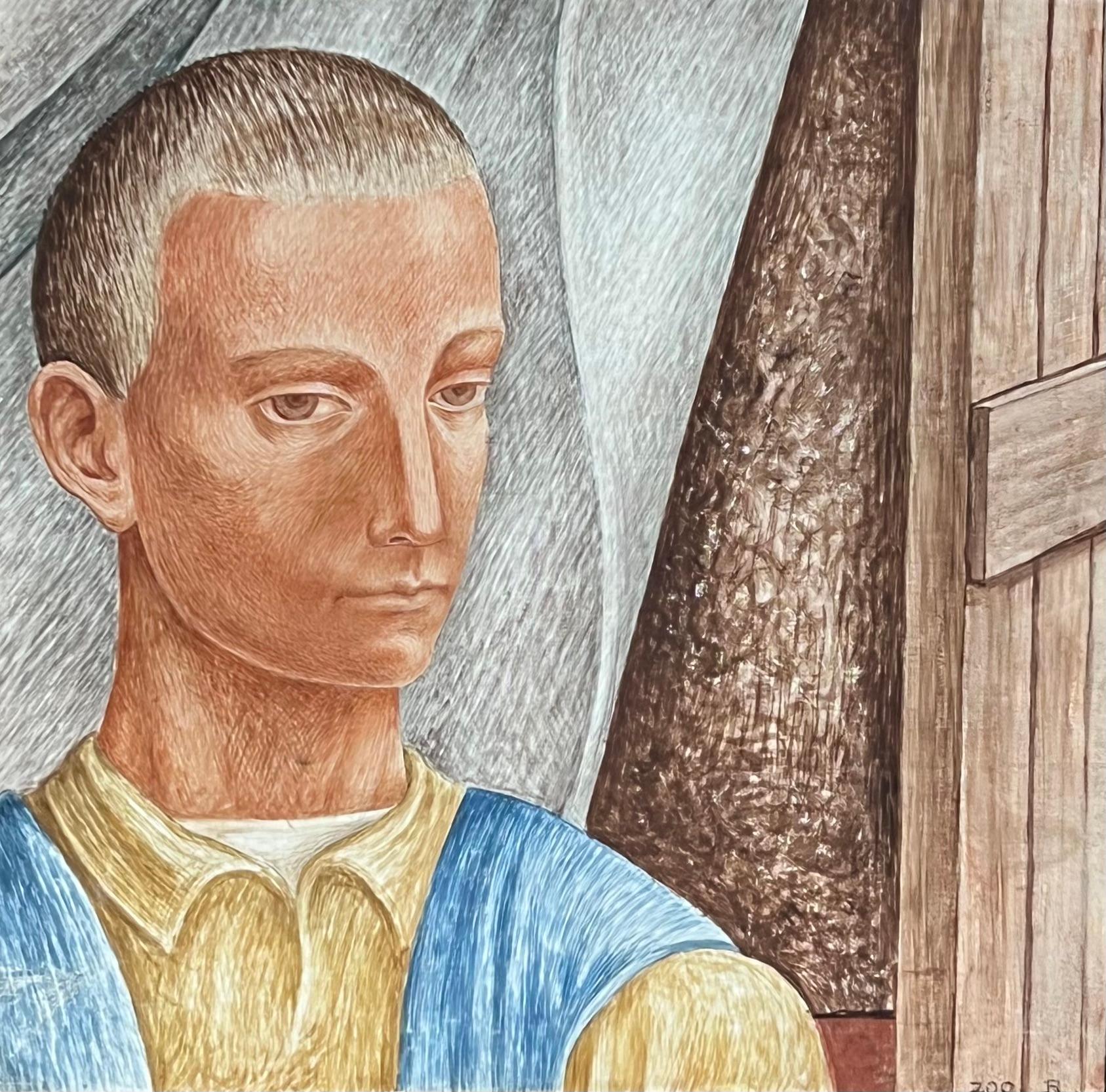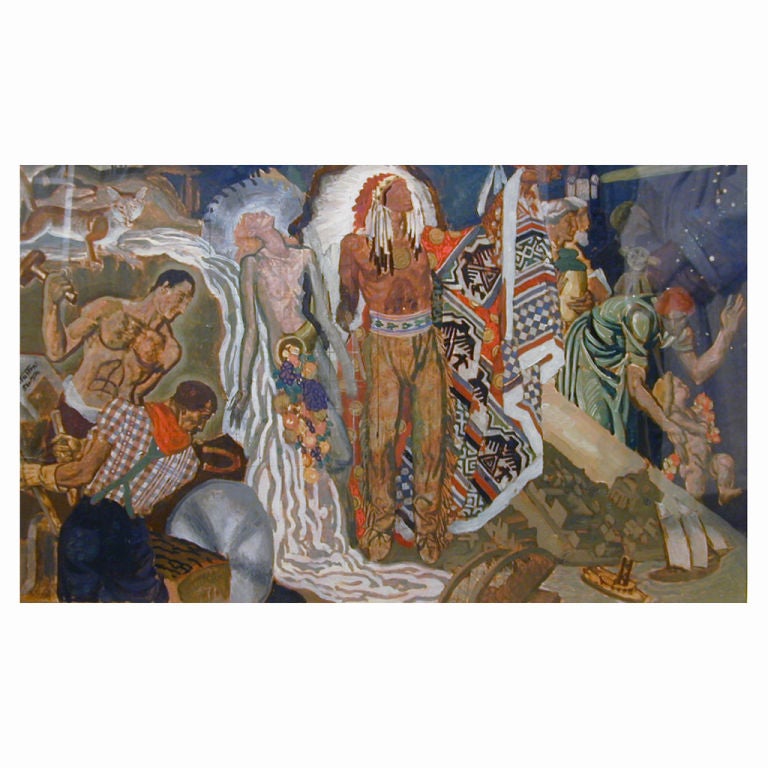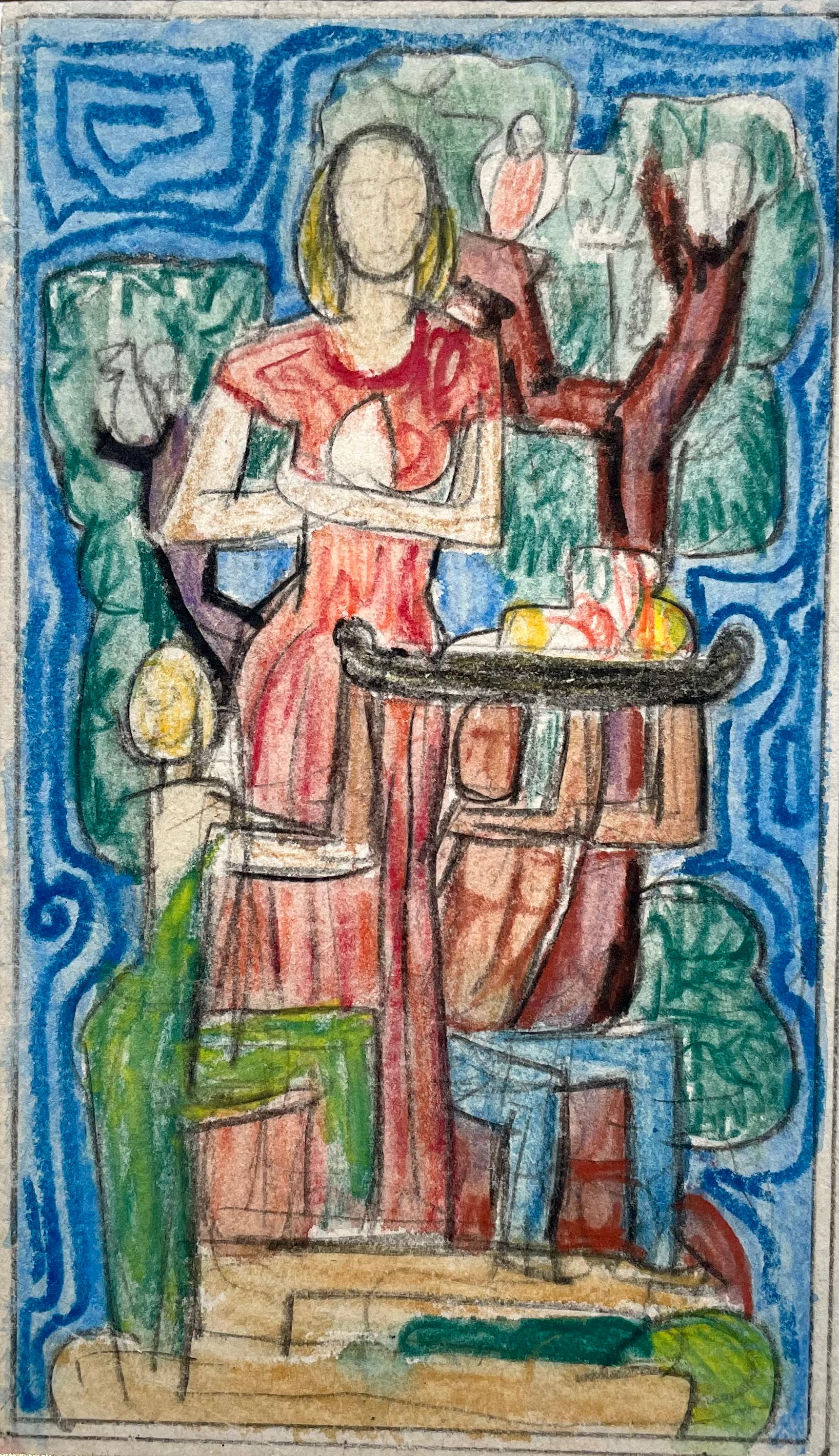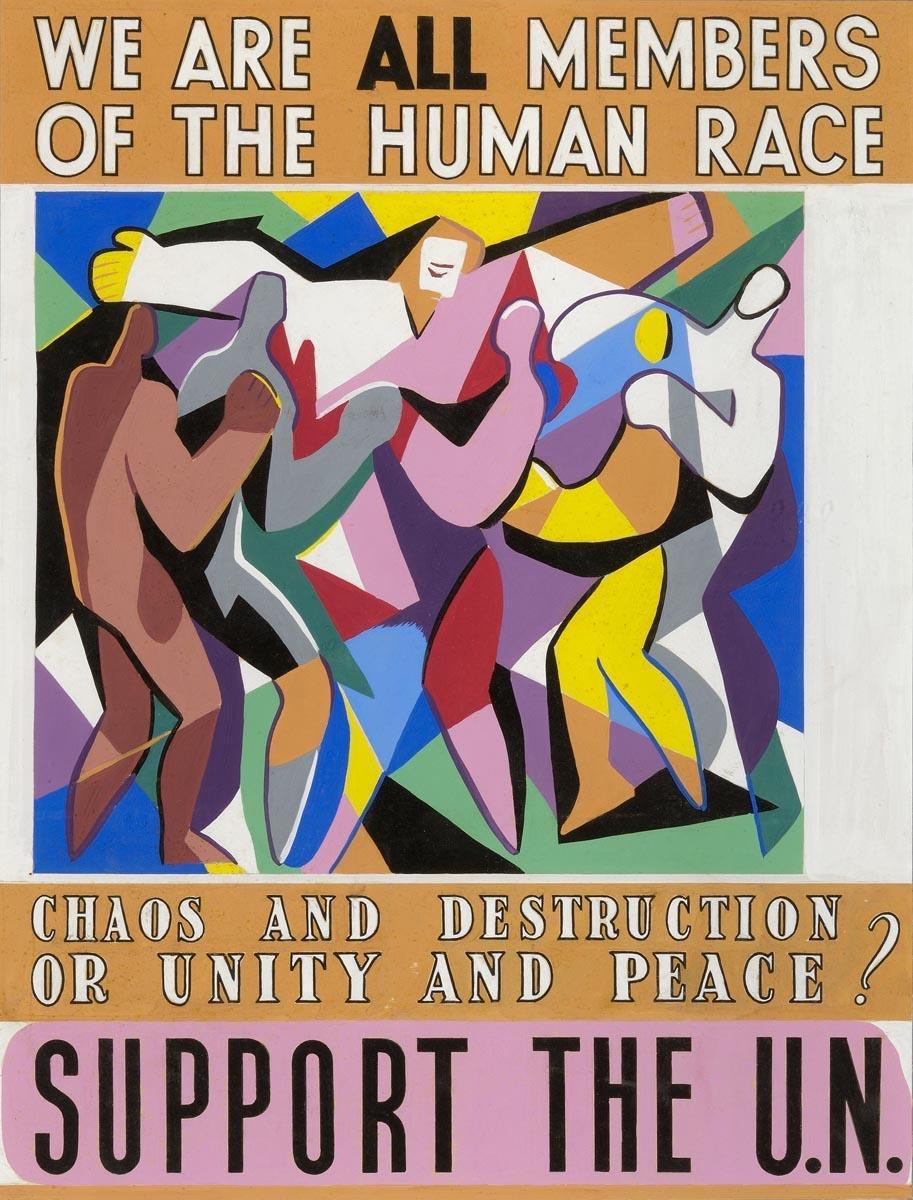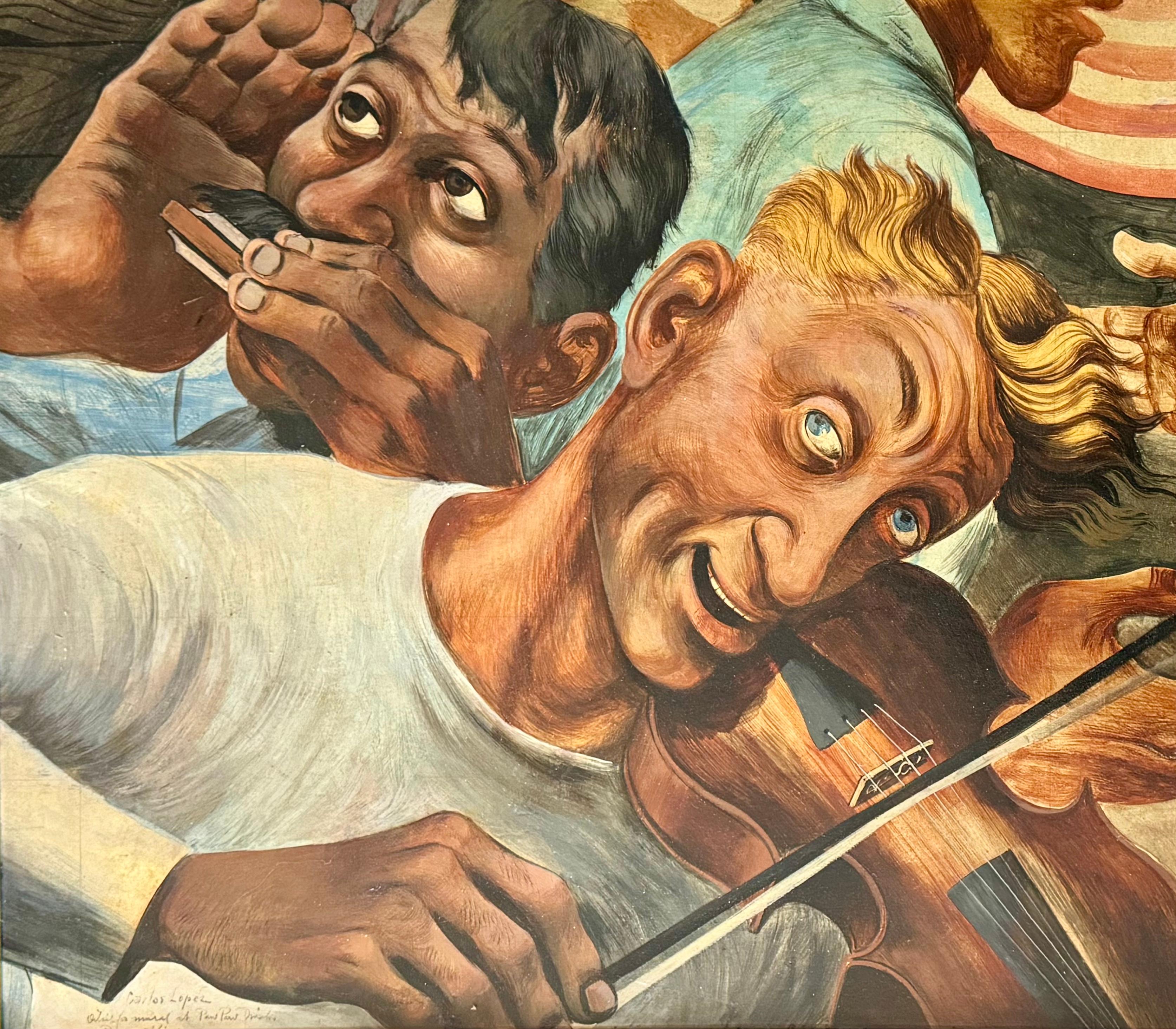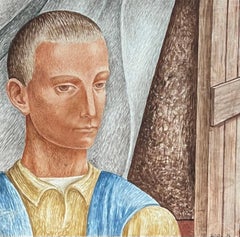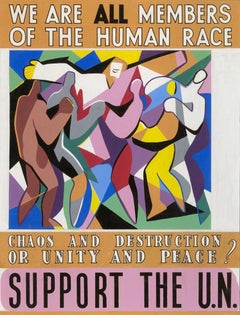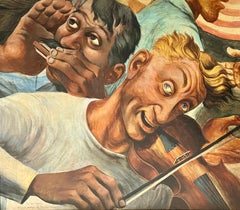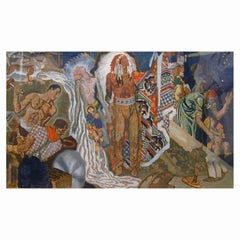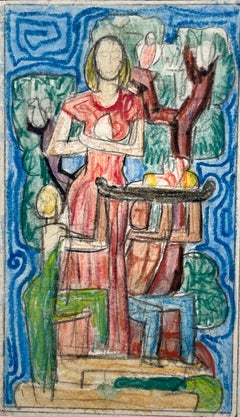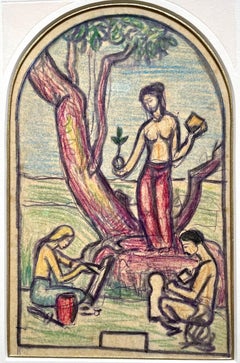Items Similar to NYC 1939 World's Fair Mural Study American Scene WPA Modern Mid 20th Century
Want more images or videos?
Request additional images or videos from the seller
1 of 9
Eugene SavageNYC 1939 World's Fair Mural Study American Scene WPA Modern Mid 20th Century1939
1939
$25,000
£18,866.81
€21,599.65
CA$35,258.29
A$38,709.20
CHF 20,194.67
MX$468,435.26
NOK 253,108.89
SEK 238,495.13
DKK 161,235.61
About the Item
NYC 1939 World's Fair Mural Study American Scene WPA Modern Mid 20th Century
Eugene Savage (1883 – 1978)
1939 World’s Fair Mural Study
45 x 30 inches
Oil on Canvas
Signed lower right
The painting is part of a 1,000 piece collection of art and objects from the 1939 World’s Fair. The collection as a whole is available.
Savage created the mural for the facade of the Communications Building. An image of the completed mural, along with a published postcard, is part of the listing. Note the center top female figure, she resembles the figure in the offered painting.
BIO
Eugene Francis Savage was born in Covington, Indiana 1883. He underwent various forms of art training in the early years. He was a pupil of The Corcoran Gallery and The Art Institute of Chicago, and was later awarded a fellowship to study in Rome at The American Academy.
While under the spell of that ancient city the young artist began to render historic figures that were suitable for the classic style needed for mural painting in the traditional manor. During this period he was able to study and observe Roman and Greek sculpture, although much of the academic training was accomplished by using plaster casts along with the incorporation of live models. This method survived and was used efficiently throughout Europe and the United States.
After leaving the Academy, Savage was commissioned to paint numerous murals throughout the United States and Europe. This artist received acclaim for the works he produced while under commissions from various sources. This young master was a contemporary of Mexican muralists David Alfaro Siqueiros (1896-1974), Jose Clemente Orozco (1883-1949) and Diego Rivera (1886-1957). In this period he was to show the influence of his contemporaries in formulating a modern style. Savage also played a vital role in the WPA Federal Art program, and he was a member of The Mural Art Guild..
Savage was elected an associate member of The National Academy of Design in 1924 and a full member in 1926. From 1947, he held a professorship at Yale University where he taught mural painting, and some of his students went on to significant positions.
By this time the artist had painted large-scale murals at Columbia, Yale University, Buffalo N.Y., Dallas, Texas, Chicago, Indiana, along with other commissioned works. He also achieved recognition for a series of murals commissioned by the Matson Shipping Line and completed around 1940. For this commission, Savage made many exacting studies of customs and folkways of the Hawaiian natives. However, the award-winning murals were not installed as planned but were put in storage during the war years when the ships were used for troop transportation and were in danger of attack.
However the mural images were reproduced and distributed by the shipping company including nine of the mural scenes that were made into lithographed menu covers in 1948. The American Institute of Graphic Arts awarded certificates of excellence for their graphic production, and the Smithsonian Institute exhibited the works in 1949. Today Savages' Hawaiian Art production is held in high regard by collectors of Hawaiian nostalgia.
In later years the artist focused his attention on a theme that dealt with the customs and tribal traditions of the Seminole Indians of Florida. He produced many variations of this theme throughout his lifetime, and the pictures were usually modest scale easel paintings, precise and carefully delineated. Many of these pictures incorporate Surrealistic elements and show some minor stylistic influences of the painters Kay Sage (1886-1957) and Yves Tanguy (1900-1955). Many of Savages' artistic portrayals of Seminole culture could be considered Dreamscapes with models and elements are often composed in a stage-like setting.
- Creator:Eugene Savage (1883 - 1978)
- Creation Year:1939
- Dimensions:Height: 47 in (119.38 cm)Width: 32 in (81.28 cm)
- Medium:
- Movement & Style:
- Period:
- Condition:
- Gallery Location:New York, NY
- Reference Number:1stDibs: LU1156213040972
About the Seller
5.0
Gold Seller
Premium sellers maintaining a 4.3+ rating and 24-hour response times
Established in 2008
1stDibs seller since 2019
195 sales on 1stDibs
Typical response time: <1 hour
- ShippingRetrieving quote...Shipping from: Pawling, NY
- Return Policy
Authenticity Guarantee
In the unlikely event there’s an issue with an item’s authenticity, contact us within 1 year for a full refund. DetailsMoney-Back Guarantee
If your item is not as described, is damaged in transit, or does not arrive, contact us within 7 days for a full refund. Details24-Hour Cancellation
You have a 24-hour grace period in which to reconsider your purchase, with no questions asked.Vetted Professional Sellers
Our world-class sellers must adhere to strict standards for service and quality, maintaining the integrity of our listings.Price-Match Guarantee
If you find that a seller listed the same item for a lower price elsewhere, we’ll match it.Trusted Global Delivery
Our best-in-class carrier network provides specialized shipping options worldwide, including custom delivery.More From This Seller
View AllWPA Mural Study 1940 American Scene Modern Social Realism Figurative Mid Century
By Michael Loew
Located in New York, NY
WPA Mural Study 1940 American Scene Modern Social Realism Figurative Mid Century
Michael Loew (1907-1985)
Detail for Mural (Social Security Building Washington D.C.)
24 x 24 inches ...
Category
1940s American Realist Figurative Paintings
Materials
Canvas, Oil
WPA Mural Study American Scene Social Realism Mid 20th Century Modern Workers
By Seymour Fogel
Located in New York, NY
WPA Mural Study American Scene Social Realism Mid 20th Century Modern Workers
Seymour Fogel (1911-1984)
Mural Study, untitled
11 x 49 1/4 inches (sight)
Tempera on board
Provenance:...
Category
1930s American Modern Figurative Paintings
Materials
Egg Tempera, Board
UN Poster Design American Scene Mid 20th Century Modernism WPA World Peace
By Jo Cain
Located in New York, NY
UN Poster Design American Scene Mid 20th Century Modernism WPA World Peace
Jo Cain (1904 – 2003)
We Are All Members of the Human Race: UN Poster Proposal
21 x...
Category
1940s American Modern Figurative Paintings
Materials
Egg Tempera, Board
Post Office WPA Mural Study American Scene Social Realism Modern 20th Century
By Carlos Lopez
Located in New York, NY
Post Office WPA Mural Study American Scene Social Realism Modern 20th Century
Carlos Lopez (1910-1953)
"Bounty" WPA Mural Study for Michigan Post Office
19 ½ x 22 ½ inches
Oil on B...
Category
1940s American Realist Figurative Paintings
Materials
Oil, Board
"Union Square" NYC American Scene Social Realism Modernism WPA Mid-20th Century
By Agnes Hart
Located in New York, NY
"Union Square" NYC American Scene Social Realism Modernism WPA Mid-20th Century
Agnes Hart (American, 1912-1979)
"Union Square, New York City"
Sight: 14 1/2 x 21 1/2 inches
Gouache...
Category
1940s American Modern Landscape Paintings
Materials
Gouache, Board
WPA Mural Study Mid-Century Modern American Scene Social Realism Workers
By Anton Refregier
Located in New York, NY
WPA Mural Study Mid-Century Modern American Scene Social Realism Workers
Anton Refregier (1905-1979)
Mural Study, Untitled
7 ¾ x 22 inches (sight)
Gouache, pencil, and charcoal on board, c. 1940s
Unsigned
Provenance: Estate of Seymour Fogel, noted verso
Thomas McCormick Gallery...
Category
1940s American Modern Mixed Media
Materials
Charcoal, Gouache, Board, Pencil
You May Also Like
"Spirit of Oshkosh, " Art Deco Mural Study by Eugene Savage, 1937
By Eugene Francis Savage
Located in Philadelphia, PA
This very rare and important study for "The Spirit of Oshkosh," a major mural in Wisconsin, was painted by Eugene Savage in 1937. Savage is best know...
Category
Vintage 1930s American Art Deco Paintings
Materials
Paint
Plenty - 1930s British Art Deco design for a Mural by Harry Carleton Attwood
Located in London, GB
HARRY CARLETON ATTWOOD
(1907-1985)
Plenty - Design for Eltham Palace
Chalks
Framed
20.5 by 12 cm., 8 by 4 ¾ in.
(frame size 39.5 by 31.5 cm., 15 ½ by 12 ½ in.)
Attwood was born i...
Category
1930s Art Deco Figurative Drawings and Watercolors
Materials
Chalk
The Model - 1930s mural design for Eltham Palace by Harry Carleton Attwood
Located in London, GB
HARRY CARLETON ATTWOOD
(1907-1985)
The Model - Design for Eltham Palace
Coloured chalks, arched top
Framed
21 by 13 cm., 8 ¼ by 5 in.
(frame size 39.5 by 31.5 cm., 15 ½ by 12 ½ in...
Category
1930s Art Deco Figurative Drawings and Watercolors
Materials
Chalk
WPA Magic Realism Oil Painting National Gallery MOMA Thornberg Female 1930's
Located in Buffalo, NY
An original oil on canvas by WPA era artist Cleo Sara Thornberg whose work is represented in the collections of the National Gallery, The MOMA, and The National Gallery.
This utterl...
Category
1930s Surrealist Figurative Paintings
Materials
Canvas, Oil
Extraordinary Study for Art Deco Mural/Screen by DiTullio
By Frank Lloyd Wright
Located in Philadelphia, PA
Clearly influenced by the decorative motifs of Frank Lloyd Wright, Rennie Mackintosh and the Secessionists, this remarkable study for a set of four murals (or four panels of a foldin...
Category
Early 20th Century American Art Deco Paintings
Materials
Pen, Pencil, Watercolor, Gouache, Paper
Foire de Paris 1937 advertising poster design gouache Art Deco Tricolore
Located in London, GB
To see our other Designs including Architectural Drawings, scroll down to "More from this Seller" and below it click on "See all from this Seller."
Anonymous
Foire de Paris...
Category
1930s Art Deco Abstract Drawings and Watercolors
Materials
Watercolor
More Ways To Browse
Vintage Worlds Fair
1939 Fair
1939 World Fair
Mid Century Nyc
Mid Century Murals
Vintage Matson
Wpa Mural Study
Seminole Indian
Caravaggio Painting
Guitar Oil Painting
Vintage Circus Clown
Vintage Clown Oil Paintings
Acrylic Cartoon Paintings
Cafe Scene Painting
Charlie Chaplin Vintage
Blue Face Painting
Isaac Pelayo
Kibbutz Art
